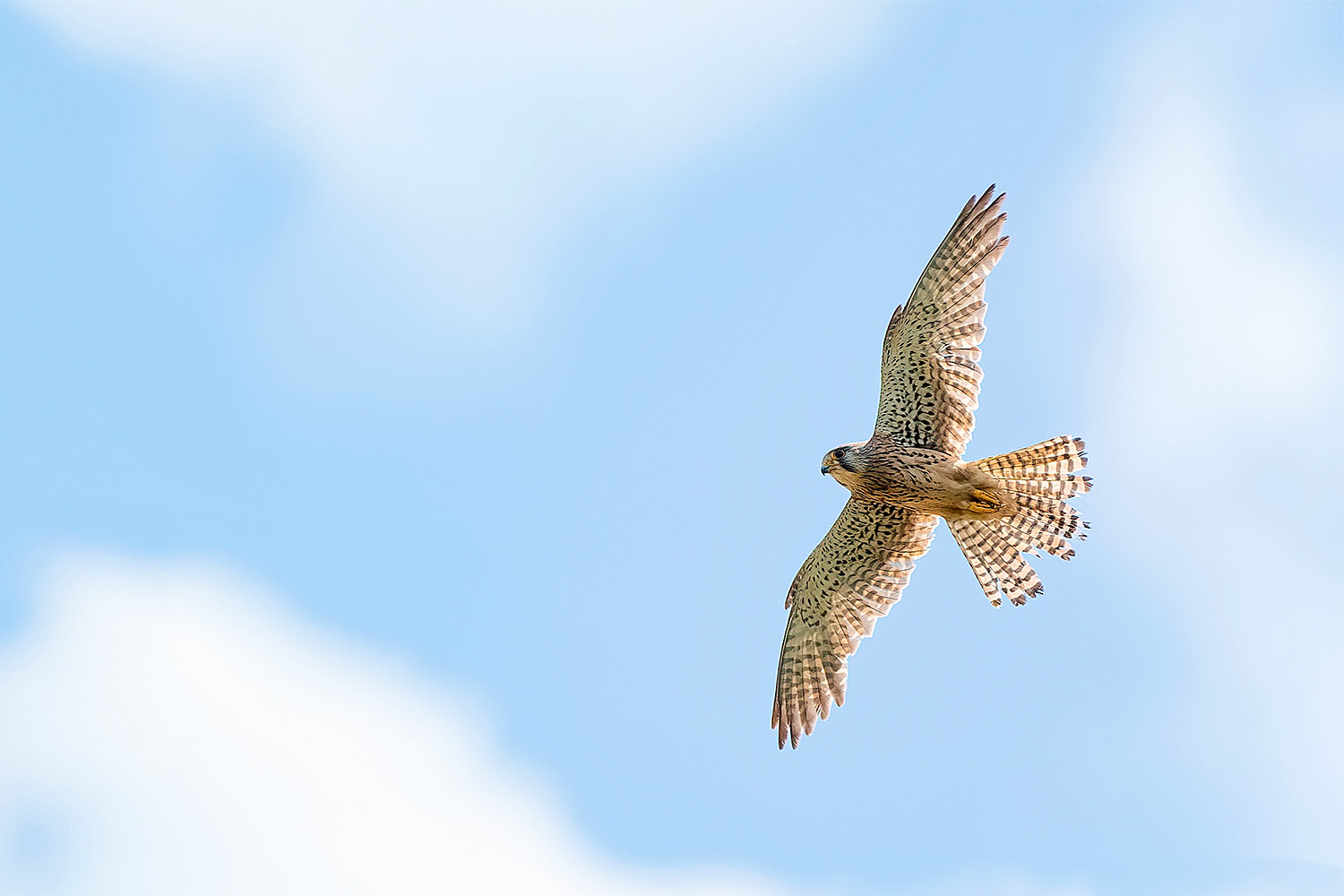
About a month after birds hatch, they leave their nest to begin life on their own—a process known as fledging. I once watched a program that followed the story of a kestrel family preparing for that moment.
For reasons unknown, a pair of kestrels had built their nest on the balcony of a 13th-floor apartment, where they lovingly raised six chicks. Then one day, seemingly no different from the rest, one of the chicks flapped its wings more vigorously than usual. With quiet determination, it lifted into the air and left the nest.
A few days later, another chick began scratching at the floor with its feet, flapping its wings anxiously. From across the way, the mother and father kestrels flew to a nearby perch, watching silently but attentively, as if offering encouragement. The chick climbed onto the railing, flapped its wings, and eventually took flight—another successful fledging.
Four chicks remained. They didn’t seem ready to leave. One cautiously extended a foot past the edge of the balcony, only to pull it back quickly. Compared with their older siblings, these chicks were clearly more timid.
Then, the mother kestrel returned, carrying food in her beak. All four chicks rushed toward her, eager to be fed, but curiously, she flew away without giving them the food. As the confused chicks milled around, the mother soon reappeared, food still in her beak. She showed it to them, then flew off once more.
This was no act of neglect; it was a strategic move to encourage her chicks to leave the nest. Perhaps understanding her intent, one chick finally summoned the courage to fly to her. Seeing this, another followed. It hit a wall and nearly fell but quickly recovered and soared into the sky.
Now only two chicks remained. They stayed huddled in a corner of the balcony, too afraid to approach the edge. Then the mother began circling in the air where they could see her, as if to say, “Don’t be afraid. This is how you fly.”
One of them opened its wings and tried to follow, but fell. The mother gently brought it back to the nest. The chick seemed ready to try again, but the fear of falling must have been too great; it soon retreated and hid in the corner.
For the first time, the mother kestrel let out a cry—a sound filled with urgency, as if pleading with her chicks not to give up. At the sound of her voice, one chick that had been turned away slowly stepped forward onto the railing and, at last, spread its wings.
For the final chick, the mother performed one last flight demonstration, hovering just outside the nest. The chick watched her for a long while. Then, gathering its strength, it too took flight. Though it struggled—clinging to the wall, flying and falling—it never gave up. At last, it flew straight into its mother’s embrace, and she joyfully nuzzled its face.
The mother kestrel then flew with her youngest to a nearby forest, where the rest of the family was waiting. Once the chicks grow stronger there, they will fly even farther into the wild.
This quiet drama of the kestrel family felt like a reflection of our own journey as we prepare to return to our heavenly home. Not a single chick was left behind—each one fledged, thanks to the unwavering love of their mother. Watching her pour out more care and effort for the weakest among them, I saw the image of our Heavenly Mother, who sacrifices Herself so that we may soar spiritually.
Our journey is never taken alone. When the road to heaven feels difficult or daunting, our Heavenly Mother is always by our side—praying for us, encouraging us, and ensuring that not one of Her children is left behind.
As I think of our Mother, who walks the path of faith ahead of us and leads us toward salvation, I, too, will open the wings of hope and fly toward the kingdom of heaven.